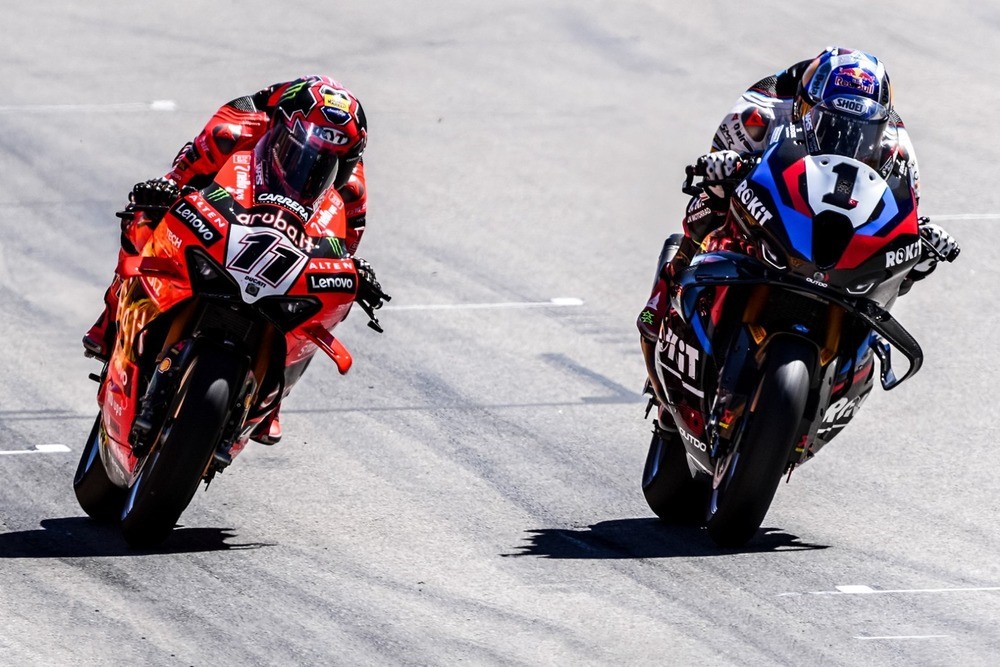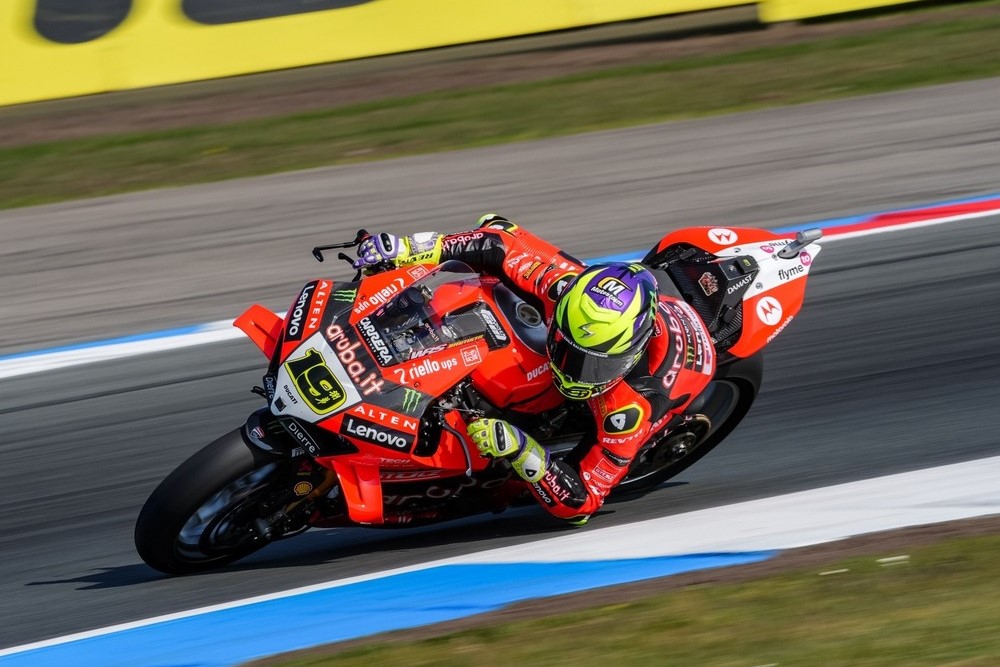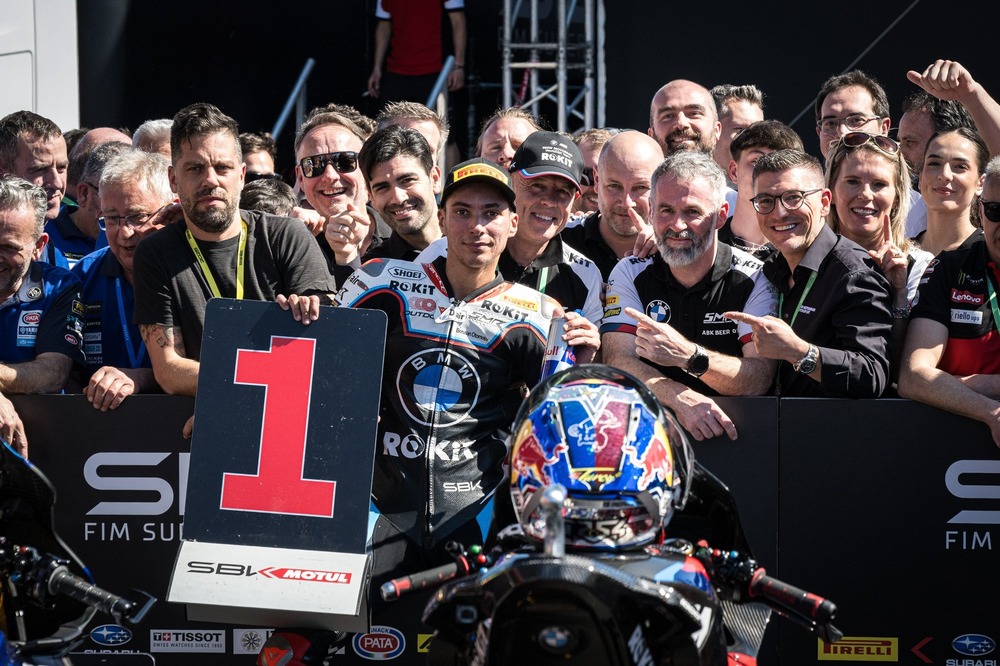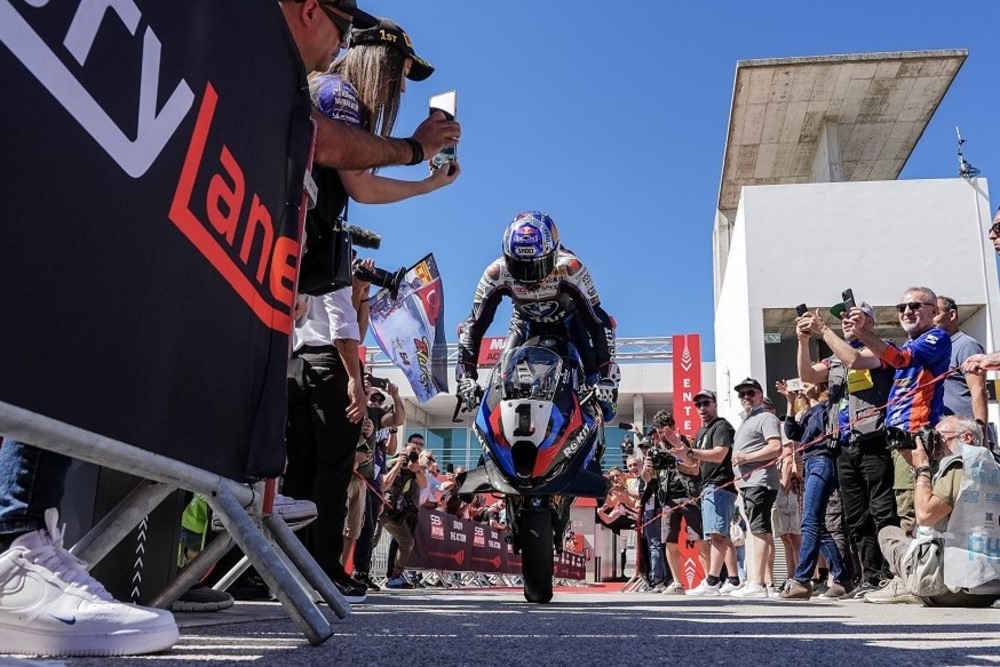BMW and Ducati have been hit with fuel flow reductions ahead of this weekend’s Dutch WorldSBK at Assen.
The groundbreaking performance balancing system based on fuel flow limits has been introduced to the 2025 World Superbike Championship (WorldSBK), aiming to level the competitive playing field among manufacturers.
BMW and Ducati, two dominant forces in the championship, have been subjected to fuel flow reductions for the Dutch WorldSBK round at TT Circuit Assen following their impressive performances in the opening rounds at Phillip Island and Portimao.
This decision marks a pivotal moment in WorldSBK’s efforts to ensure fair competition while maintaining the excitement of the sport.
The new regulation outlined in article 2.4.3.2 of the WorldSBK rules stipulates that manufacturers exceeding specific performance thresholds will face fuel flow reductions.
Ducati and BMW crossed the -0.250 threshold but remained below -0.500, triggering a Step 1 penalty that reduces their maximum fuel flow reduction by 0.5 kg/h—from 47 kg/h to 46.5 kg/h.
This adjustment is intended to counteract their dominance and provide other manufacturers, such as Yamaha, Honda, Kawasaki, and Bimota, with a fairer chance to compete at the highest level.
The decision to impose these restrictions comes after Ducati’s Nicolo Bulega secured three consecutive wins in Australia and BMW’s Toprak Razgatlioglu achieved a similar feat in Portugal, showcasing the exceptional capabilities of their respective machines—the Panigale V4 R and M1000 RR.
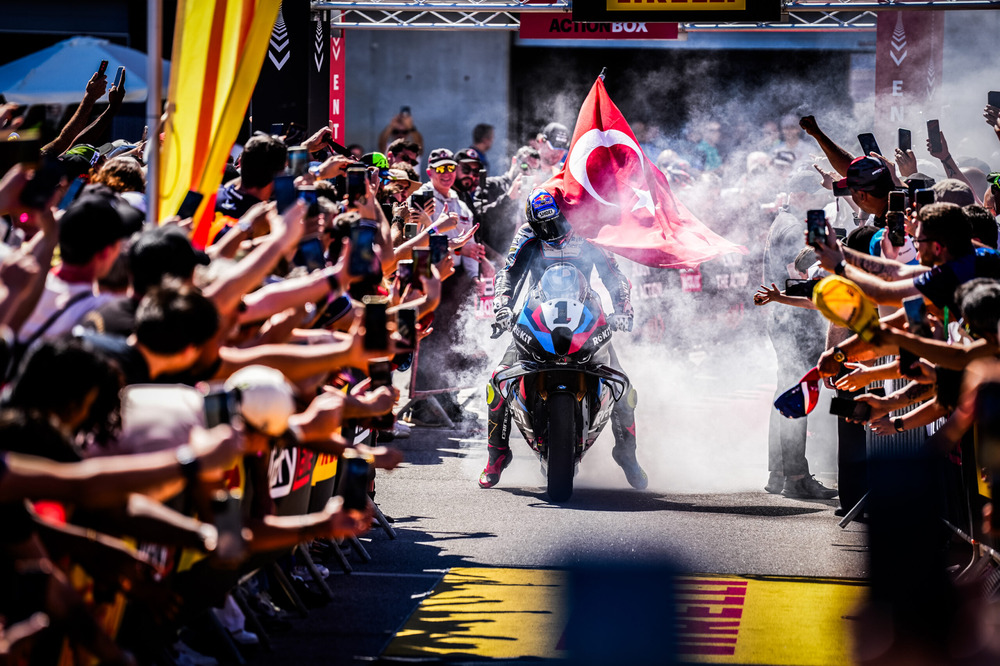
These performances underscored a growing disparity between these manufacturers and their rivals, prompting the International Motorcycling Federation (FIM) to intervene using its newly implemented algorithm for performance evaluation.
Fuel flow adjustments are part of a broader strategy introduced this season to boost competitiveness in WorldSBK. The system operates on a checkpoint basis, with evaluations conducted after every two rounds.
Assen represents the first checkpoint where adjustments have been enacted, with the next evaluation scheduled for the Italian Round at Cremona in early May.
Future penalties could escalate depending on performance thresholds: Step 2 would involve a 1 kg/h reduction for thresholds between -0.500 and -0.799, while Step 3 would impose a 1.5 kg/h reduction for thresholds of -0.750 or lower.
Despite these measures, early indications from the Dutch WorldSBK suggest that the fuel flow reductions may have limited impact on Ducati and BMW’s dominance.
During initial practice sessions, Ducati’s Alvaro Bautista led the pack with strong performances from other Panigale riders also securing top positions.
BMW’s Razgatlioglu remained competitive as well raising questions about whether these adjustments can effectively balance performance disparities or merely serve as symbolic gestures.
READ ALSO:
Dutch WorldSBK 2025 FP2: Nicolo Bulega leads Axel Bassani to conclude Friday’s practice
Dutch WorldSBK FP1: Bautista leads Razgatlioglu and Bulega
As the season progresses into its third round at Assen, this innovative regulation has already sparked significant debate and adjustments. Critics have pointed out potential flaws in the FIM’s approach, particularly regarding its reliance on an algorithm that remains opaque to many observers.
While intended to provide objective assessments of manufacturer performance, the algorithm’s complexity has led to skepticism about its effectiveness and fairness.
Furthermore, some experts argue that fuel flow reductions by 0.5 kg/h may not significantly alter race outcomes given the advanced engineering capabilities of Ducati and BMW.

